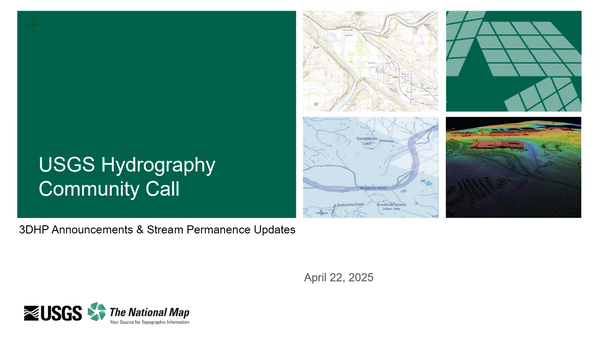April 22, 2025 USGS Hydrography Community Call: 3D Hydrography Program Announcements and "Updating historical flow permanence classifications with probabilistic continuous-value estimates” Presentation
April 22, 2025 USGS Hydrography Community Call: 3D Hydrography Program Announcements and "Updating historical flow permanence classifications with probabilistic continuous-value estimates” PresentationSteve Aichele, the National Geospatial Program Hydrography Management and Planning Lead, announced release of the Elevation Derived Hydrography Specification 2024 Revision A3 and updates on the following:







